ELITE WATERSPORTS
Last updated 4-29-2024
What size Kiteboard?
How to choose the right kiteboard.

How do I choose the right size kiteboard?
What is the best size kiteboard? This has long been a debate in kiteboarding, and the answer is not so simple. The best size kiteboard depends on the rider's weight, skill level, wind conditions, and discipline of choice. New kiteboarders should start with a larger kiteboard to make their lives easier. Most kiteboarding schools will put new students on a slightly bigger board to speed up water starts.
Large kiteboards have more surface area, making getting on a plane easier. When there are holes in the wind, they allow the board to ride through the lighter wind more efficiently, and depending on the shape, they make landing more manageable, too.
- Light-wind kiteboards 144, 145, 146, 148, 150, 155, 160.
- Mid-range kiteboards 135, 136, 137, 138, 139. 140. 141, 142.
- Strong-wind kiteboards 130, 131, 132, 133, 134, 135, 136, 137, 138.
When you are experienced, things come down to personal choice and what you want to get out of the ride. There is a general recommendation for freeride, and we'll include that size chart here. This is a great starting point for your first kiteboard and the size you will likely stick with for most kiteboarding. If you want to get into big air or freestyle, we'll cover what sizes to look at later in this blog.
What is the best size board for kiteboarding?
This guide will give you an idea of the average kiteboard sizes used by rider weight. It's important to remember that kiteboard shapes can vary significantly. Rocker, camber, width, channels, stiffness vs. flex—all of these characteristics will dictate how a board performs. We strongly advise consulting with a professional to obtain a personalized recommendation. Feel free to call or email us; we are here to assist you in selecting the most suitable kiteboard for your weight, location, skill level, and desired riding style.

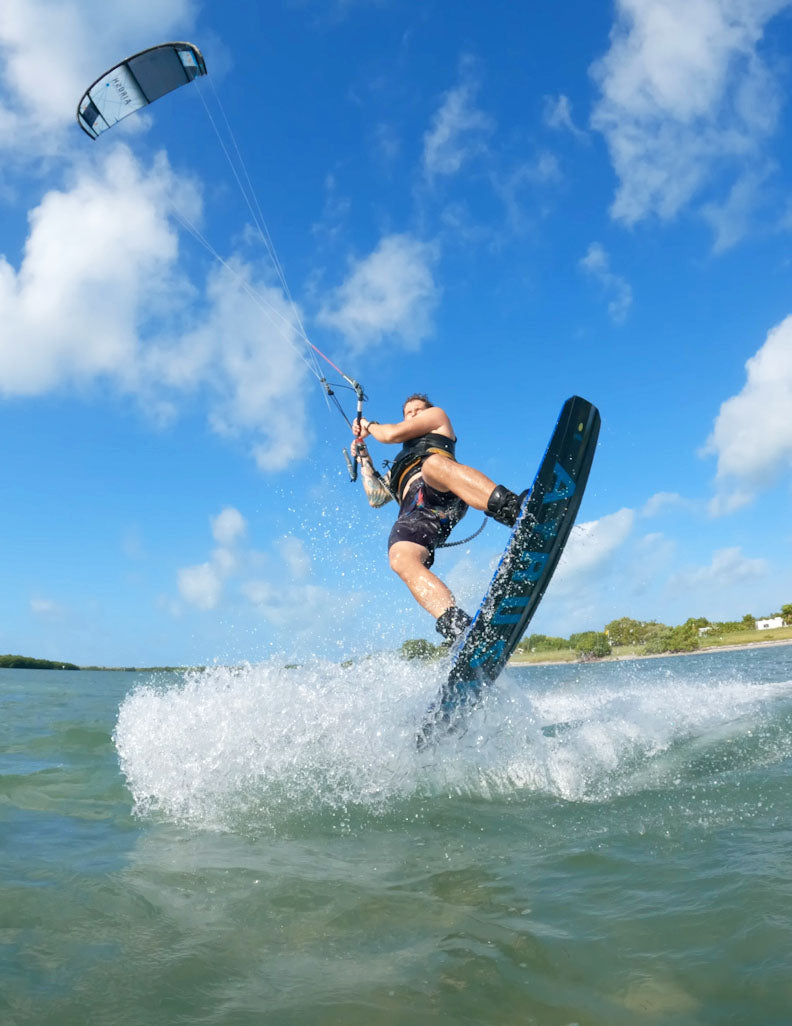
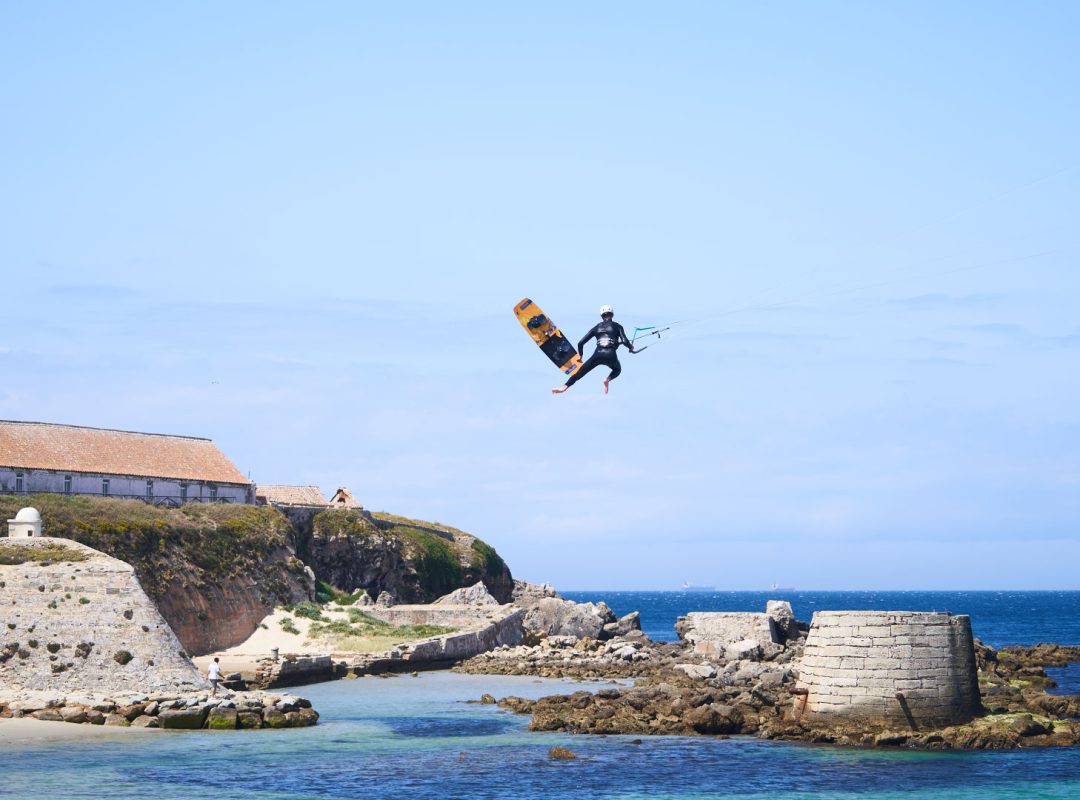
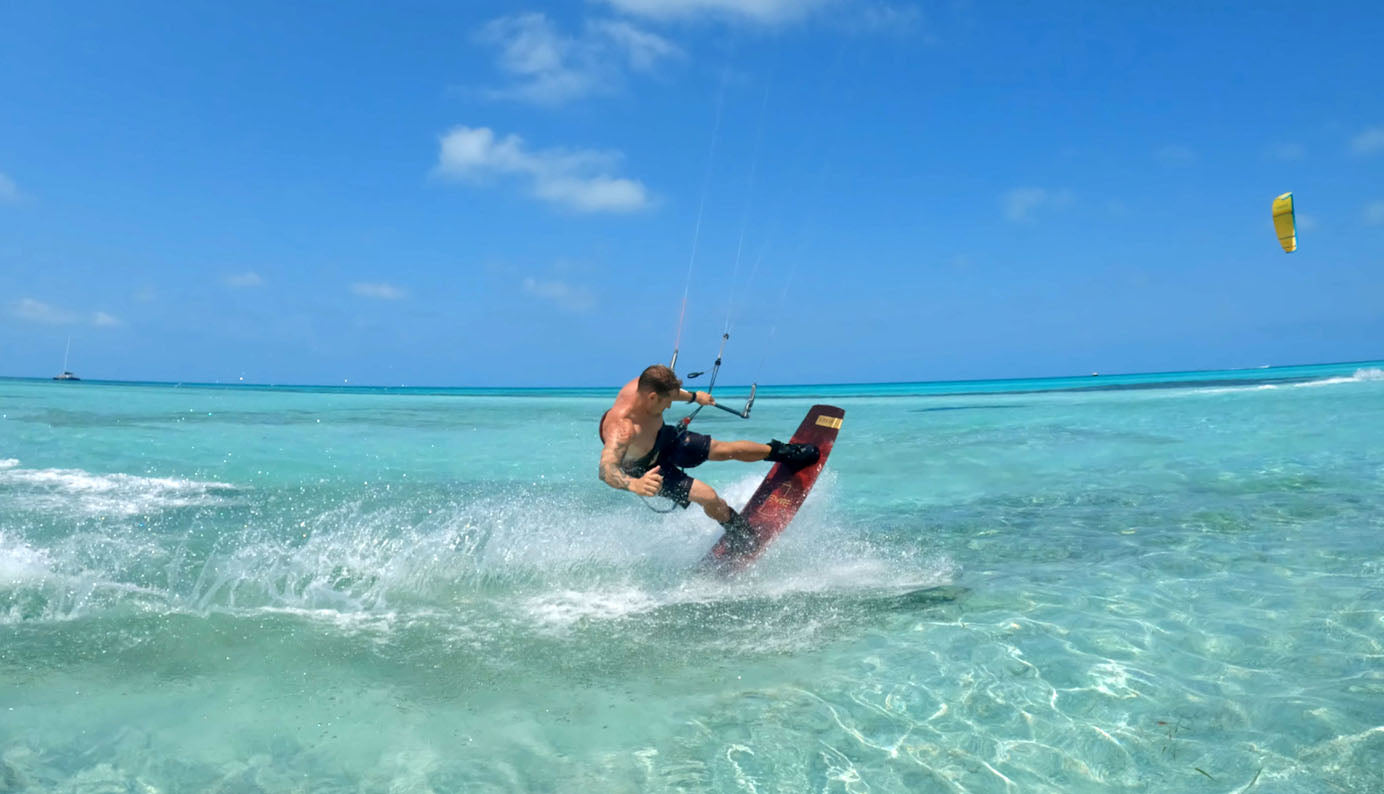
Table Of Content
- kiteboarding twintip size chart
- When to get a small kiteboard?
- When to get a big kiteboard?
- Do I need more than one kiteboard?
- Where can I buy a kiteboard?
kiteboarding twintip size chart
Kiteboard twintip Size Chart
Kiteboard size recommendation by rider weight. You will notice there is an extensive range to choose from. This is because all kiteboards ride differently. It's best to talk with an expert to get a good recommendation on a board, the correct sizing for you, and why it's a good fit. Call the shop or email us so we can help you choose the best kiteboard size.
- 100 - 130 lbs: 127 - 133
- 130 - 140 lbs: 133 -136
- 140 - 150 lbs: 135 - 139
- 150 - 160 lbs: 137 - 140
- 170 - 190 lbs 138 - 142
- 200 - 220 lbs: 141 - 148

Remember, boards can vary wildly. Call for a personal recomendation.
If you are a new rider, opt for a large kiteboard for your first year of riding. Consider a light wind kiteboard for your first board. This is also a great move if you live somewhere with light wind. Large boards are easy to learn on and perfect for light winds. Later, when you get more advanced, you will have a good board for light winds, and you can invest in an upgraded big air board or a freestyle or freeride-oriented board.
The best style of board to start with is a mid-range board. These tend to be flat with a medium flex and medium in size. They are forgiving, efficient, and will be fun for years. Most riders are happy with this style of board and never upgrade. They work great for jumping and are easy on the knees. They also tend to ride upwind very well and have a playful feel.
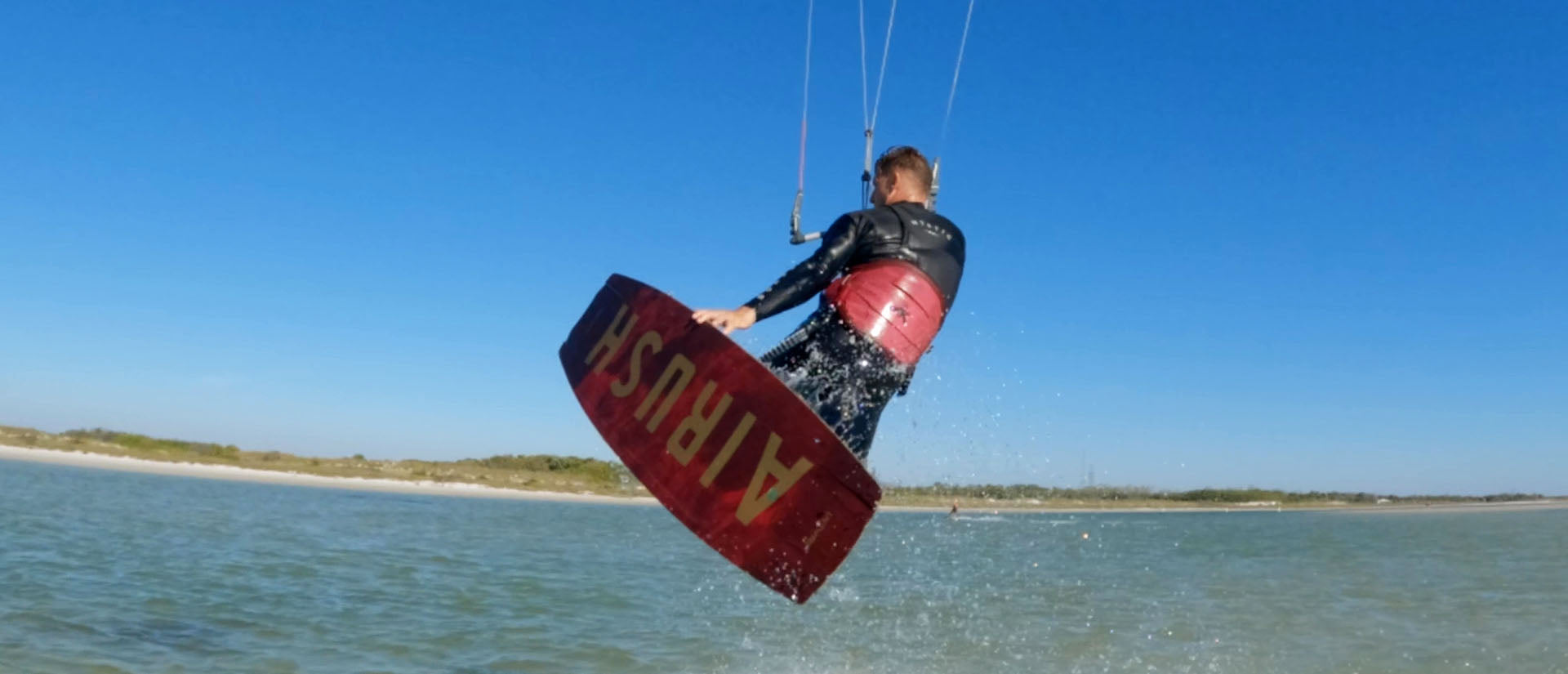
When to get a small kiteboard?
Big air riders use small kiteboards, sometimes too small. Be careful when following the trends, as some big air riders use boards that are way too small for the conditions in which you might be kiteboarding. It's common to see 180 lb men using a 133 kiteboarding twintip for big air kiteboarding. Small boards allow a rider to hold down more power and get more speed for big jumps in strong conditions.
This is great if you are riding in 35 or 40 knots! This board will be almost useless if riding at 20 to 25 knots. In the right conditions, this will be an amazing tool. You’ll be able to hold down way more power and control your jumps. Board-offs and other big air tricks will be easier, too.
Pros of small kiteboard twintip
- Can hold down more power
- More maneuverable
- Better for big air tricks like board-offs
Cons of small kiteboard twintip
- Less upwind drive
- It's not great in light wind or when there are big holes in the wind.
- Less boared to land on

For the average weight rider of 160 to 190 lbs, something in the 138 to 142 range would be a much better fit. For the longest time, 137 to 139 was the most recommended kiteboard size for most kiteboarders, and for good reason. This size will meet most people's needs in most conditions without holding them back.If you are going for an undersized, big air board, opt for a big air-specific shape.
These boards are designed to hold down lots of power and don't release any energy early so you can expect a lot of pop! This is where talking with a local shop or having more than one board will help.
You can opt for something smaller if you are a big air rider going out in strong winds above 25 miles per hour. We recommend having a second board specifically for this.
When to get a big kiteboard?
If you are above 200 lbs, you want something bigger. A 144 is an excellent choice for your first kiteboard. The larger surface area will help you get upwind quickly and make riding a pleasure. It will be a significant advantage if you ride in lighter winds, around 16 miles per hour, give or take. Big boards are popular for freeride and freestyle riders, too. Just like big air, some trends go too far. Some riders advocate for a 180 lb rider to use something as large as a 162!
Now, if the board is either light wind specific or is long, narrow, and designed to be ridden bigger, this size does have a place, but it is far from the norm. These long, narrow boards are enjoyable in choppy and wave conditions. They also work great in flat water and feel more like snowboards
Pros of a big kiteboarding twintip
- Excellent upwind drive
- Easier for learning
- Easier landings
Cons of a big kiteboarding twintip
- Can get overpowered in strong wind
- Can be heavier

An average weight rider of 160 to 190 pounds might opt for a 142 or 144 kiteboard. This is larger than the standard recommendation and has some real advantages. A bigger board to a fault has a larger surface area to make landings easier.
It helps with board speed if the location has holey wind and can help generate more power for better jumps. This only works if the wind is generally on the lighter side. If you often have stronger wind, it will take more strength to hold down the power of a big kiteboard.
A good lightwind board is a must in every kiteboarders tool kit.
Why do you need more than one kiteboard?
Just like kites, it is best to have two or three kiteboards—one for light wind, one for the average wind, and one for big air. You might even have different boards for different disciplines.
I have a smaller foot strap board for kite loops and freeride, a larger board with boots for freestyle, a large flat kiteboard for light winds, and a kitesurf board for the waves. These four boards get me on the water no matter what the wind does.
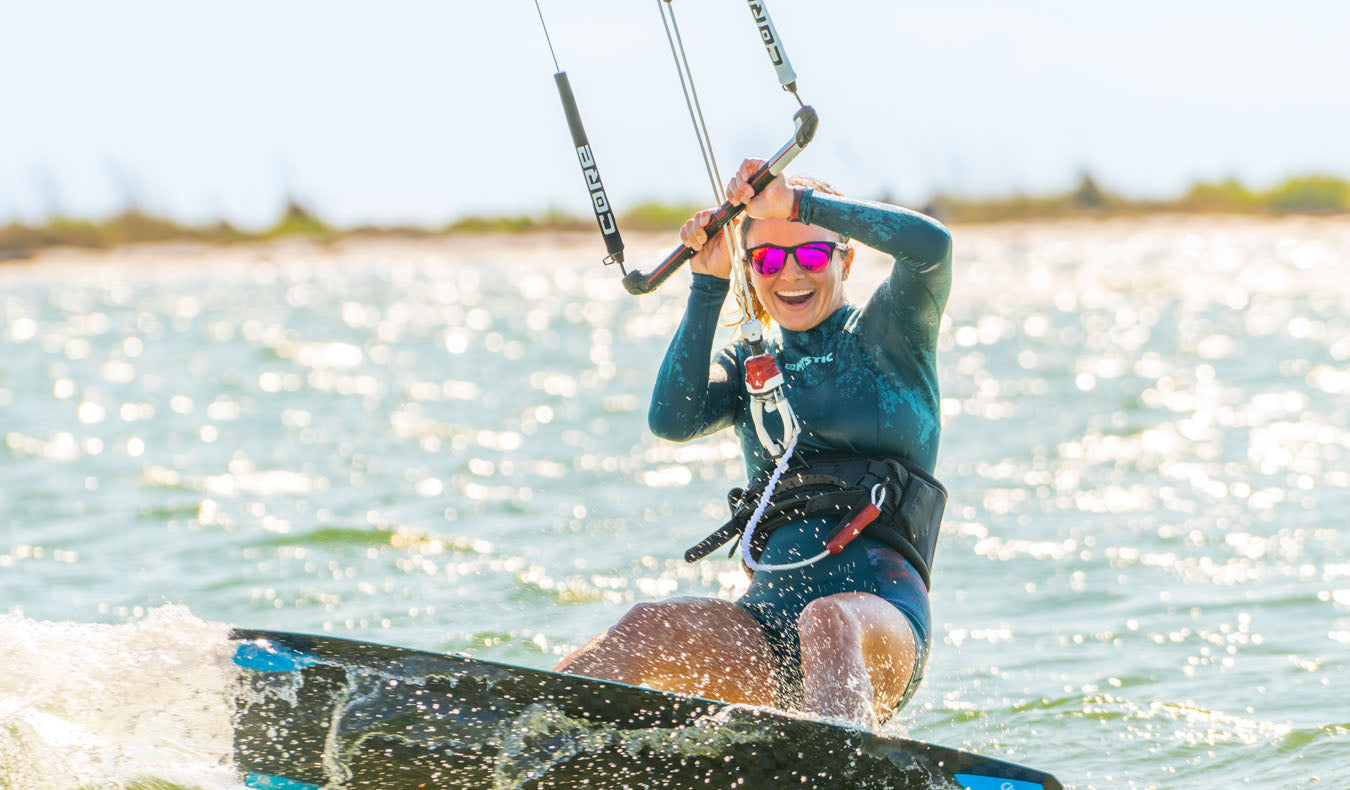
There is no best-size kiteboard, but there are guidelines. Hopefully, this guide will give you a good starting point for making smart choices. Many elements go into kiteboard design; some small boards might perform better in light wind than larger boards!
That is why it’s important to talk with someone with experience. If you’re checking out a board online, call us to talk about what would be a good fit.
Why learn kiteboarding in Tampa Bay.
We have one of the best beginner kiteboarding locations in the United States for learning to kiteboard. We have shallow flat waters that allow kiteboarding students to stand up when they fall. There is no shore break or deep waters to hinder progress.
We get consistent smooth wind that works in every direction. Our St Petersburg-based kitesurfing school offers jet ski support and custom kiteboarding lesson packages. Come join us and see what the fun is all about.
Need help buying your first kiteboard?
The expert team at Elite Watersports is here to serve. If you have any kiteboarding related questions call us. We can build custom kiteboarding packages, book kiteboarding lessons or simply offer helpful advice. We're your one stop shop for kiteboarding knowledge.
If you need help deciding on your first kiteboarding kite give Elite Watersports a call. We're happy to set you up with your first kiteboarding kite.
(727)-800-2202
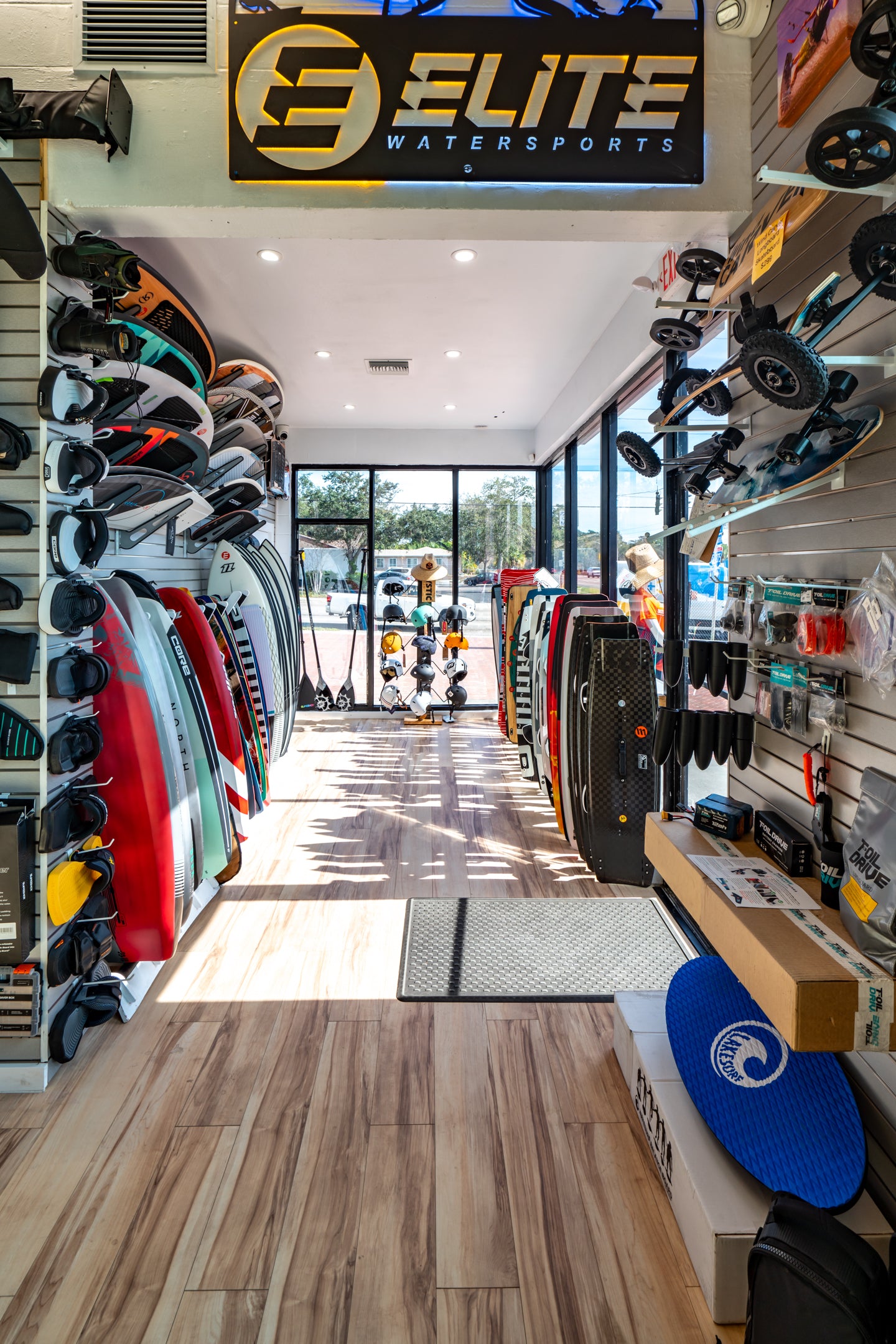


Author

Ryan "Rygo" Goloversic
Tags
Kiteboarding
Kiteboard size chart
You May Also Like
Want To learn more about kiteboarding?
Follow us to receive the latest update on our journey experience




